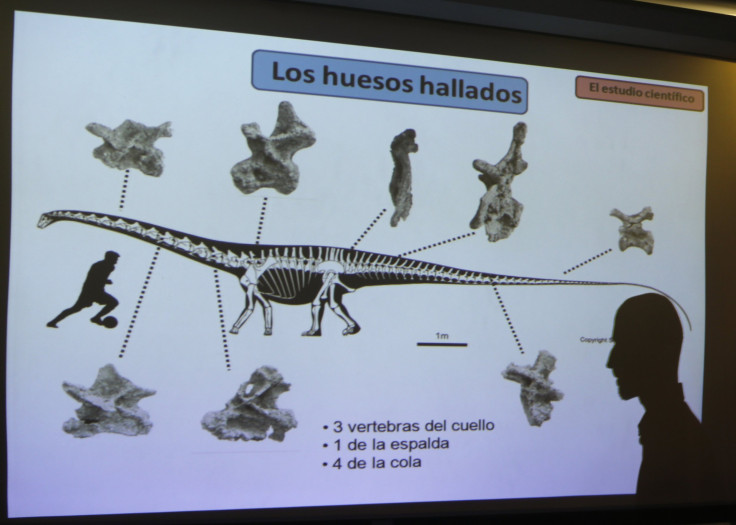
Argentine paleontologists made a big announcement on Thursday, revealing that the first South American dinosaur fossil of a Diplodocid Sauropod was discovered in Patagonia, south of the town of Picun Leufu in Neuquen province.
The finding is significant as it was previously believed that the species became obsolete during the mass extinction in the Jurassic period 140 million years ago, but the findings prove otherwise -- the Diplodocid lived on the planet after most dinosaur species became extinct.
"It was a surprise, because the first remains we found were very deteriorated and we didn't think much of them, but later through careful laboratory work, cleaning rock from the bones, we could see that they were from a diplodocid, something unthinkable for South America," said Pablo Gallina, a researcher at Buenos Aires' Maimonides University, to the Associated Press.
The discovery of the incomplete remains confirms that the Diplodocids reached South America and roamed the region during the early Cretaceous era. The finding leads scientists to believe that the diplodocid clade evolved from dinosaurs much earlier than previously believed, before Pangea -- when the Earth's continents split apart 300 million years ago.
"Diplodocids were never certainly recognized from the Cretaceous or in any other southern land mass besides Africa," wrote the authors in the PLOS ONE scientific journal. "The new discovery represents the first record of a diplodocid for South America and the stratigraphically youngest record of this clade anywhere."
Here are four things to know about the new discovery:
1. The new dinosaur has been named Leinkupal laticauda. It belongs to the sauropod family called diplodocids.
2. Despite being being the "smallest" of the diplodocid dinosaur family, the Leinkupal measures 30 feet long (9 meters). In fact, according to Argentine paleontologist Sebastián Apesteguía, the Leinkupal is "a very small guy in a lineage of giants."
3. Most of the body of the Leinkupal was formed by neck and tail, and experts believed it could not have weighed more than an elephant -- the adult African elephant weighs anywhere from 5,000 to 14,000 pounds.
4. According to researchers, the Leinkupal lived in a semiarid environment south of a large desert.
© 2025 Latin Times. All rights reserved. Do not reproduce without permission.




